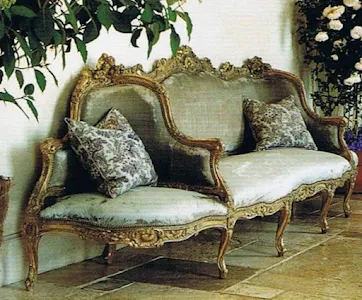Inherited Decor: Making Heirlooms Work in Modern Spaces
Inherited items aren’t just things. They’re time capsules. They hold stories, emotions, and history. Yet in a world obsessed with minimalism and trend cycles, many struggle to fit heirlooms into modern homes. We often hear, “It doesn’t match my style,” or worse, “It feels old.”
But the problem isn’t the heirloom, it’s our design idea. Good design isn’t about perfection. It’s about meaning.
Why We Reject Heirlooms
Many people hide inherited furniture or donate it. Some never unpack them. What are the most common reasons? “It’s not my taste,” “It’s too heavy,” or “It ruins the aesthetic.”
In truth, we’ve been conditioned to value newness over memory. Fast decor brands push clean lines, soft neutrals, and replaceable everything. A carved wooden cabinet from your grandmother’s house feels out of place next to R1,200 flat-pack shelving.
According to a 2022 IKEA Life at Home Report, 42% say their home doesn’t reflect who they are, and over 60% say they’ve bought decor just to fit in with social media trends. The push to conform erases history.
The Value Beyond Aesthetics
Heirlooms have weight and not just physically. They hold emotional and cultural meaning. A table where generations have gathered. A painting from a childhood home. A clock that’s ticked through decades.
These items connect us to place and people. They also reduce the environmental cost of furnishing a home. Instead of buying new, you preserve something made to last.
Interior designer Justina Blakeney writes in The New Bohemians:
“The homes that move me most are layered with stories. You feel history in the fabrics, the art, the inherited pieces that didn’t come from a catalog.”
Blending Old with New
The goal isn’t to make heirlooms disappear—it’s to make them belong.
Here’s how to do it:
1. Anchor a Space Around One Legacy Piece
Choose one item, a chair, a cabinet, or a mirror, and make it the room’s starting point. Let it lead, then build around it with lighter, more modern elements.
Example: A Victorian mahogany table can sit beneath a minimalist pendant light and next to clean-lined dining chairs.
2. Change Context, Not the Object
You don’t need to reupholster or paint everything. Sometimes, changing the location or the surrounding color scheme is enough. A heavy, gilded mirror that felt dated in a hallway may glow with character in a bright, modern bathroom.
3. Mix Eras With Intention
Pair mid-century pieces with older items. Blend textures. A 1930s trunk can act as a coffee table beside a contemporary sofa. Eclectic doesn’t mean chaotic; it means thoughtful.
4. Layer With Texture and Color
Old wood pairs beautifully with matte walls and soft textiles. Let rough edges and time-worn patina become contrast points in a cleaner room.
5. Edit, Don’t Hoard
Keep what matters most. Display only the pieces that carry real weight. Store the rest for rotation or pass them on.
What Designers Say
South African designer Mpho Mahlangu emphasizes function over perfection:
“Heirlooms carry a different kind of beauty. They speak to who you are. A home full of replicas feels empty. A home with memory has depth.”
Interior consultant Elsie Ngobeni shared in a 2023 interview:
“I once designed a modern flat in Johannesburg around a client’s inherited Ndebele chest. We didn’t hide it—we highlighted it. Paired with concrete floors and simple lighting, it became art.”
Cultural Legacy Matters
Heirlooms are especially vital in communities where history was erased or displaced. Keeping generational pieces is an act of resistance. It preserves lineage, identity, and narrative.
In many Indigenous and African cultures, objects are passed down with blessing and meaning, not just as decor but as living connections. These aren’t just “things.” They are witnesses.
What If You Don’t Love It?
Not every heirloom is beautiful or usable. That doesn’t mean it should be discarded.
Try these options:
Recontextualize it: Can a blanket become a wall hanging?
Frame part of it: A damaged garment or woven piece can become art behind glass.
Document its story: Even if you store it, write its origin. Future generations may want to rediscover it.
Conclusion: Make Room for Meaning
Modern design shouldn’t erase the past. It should elevate it.
You don’t need to love every heirloom. But you should ask what it means and what it carries. What stories it tells. In a world moving fast, these pieces slow us down. They remind us we didn’t start from scratch. We come from somewhere.
Blend the old and new. Build homes that speak to lineage and life. That’s how you design with soul.








Comments
Post a Comment